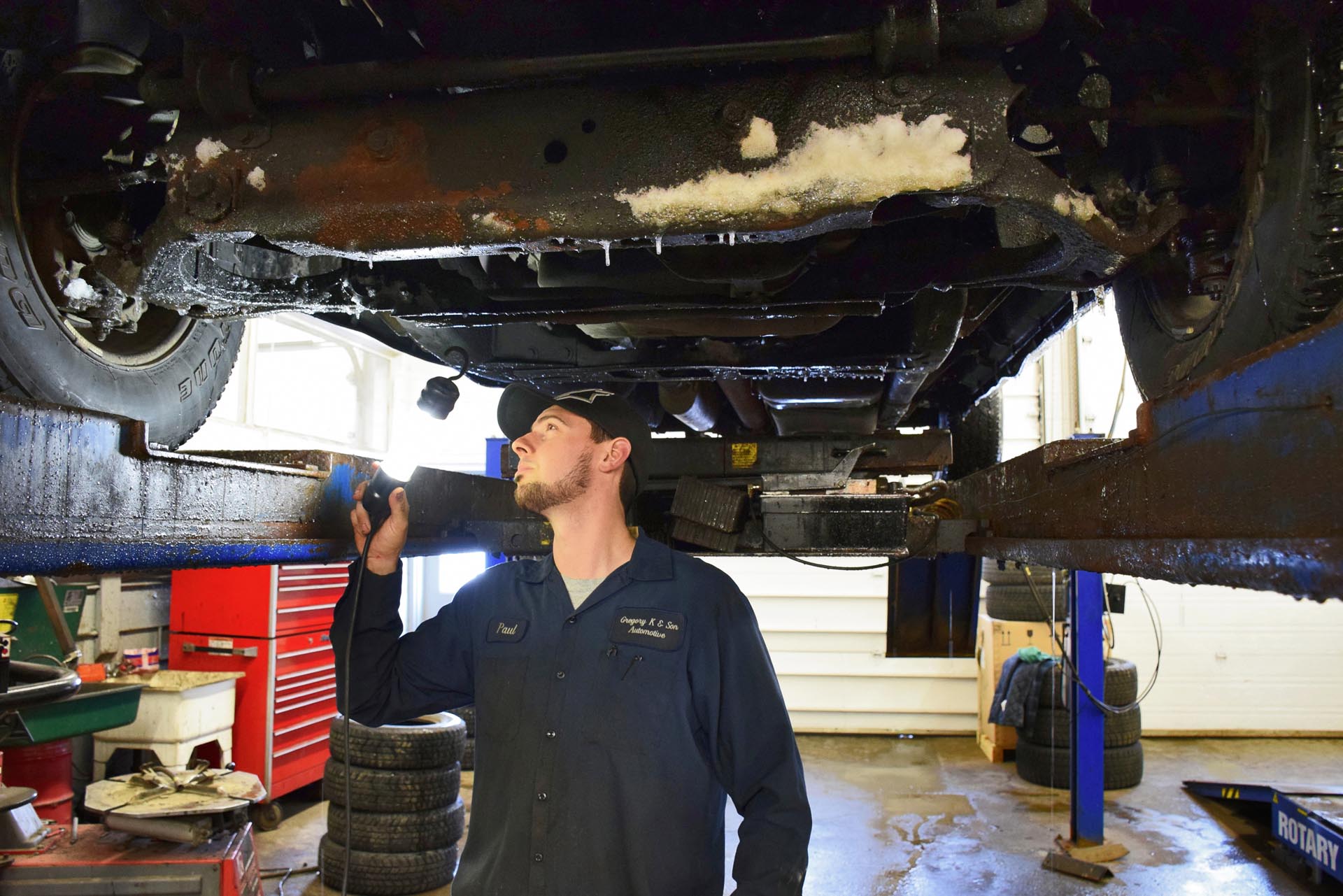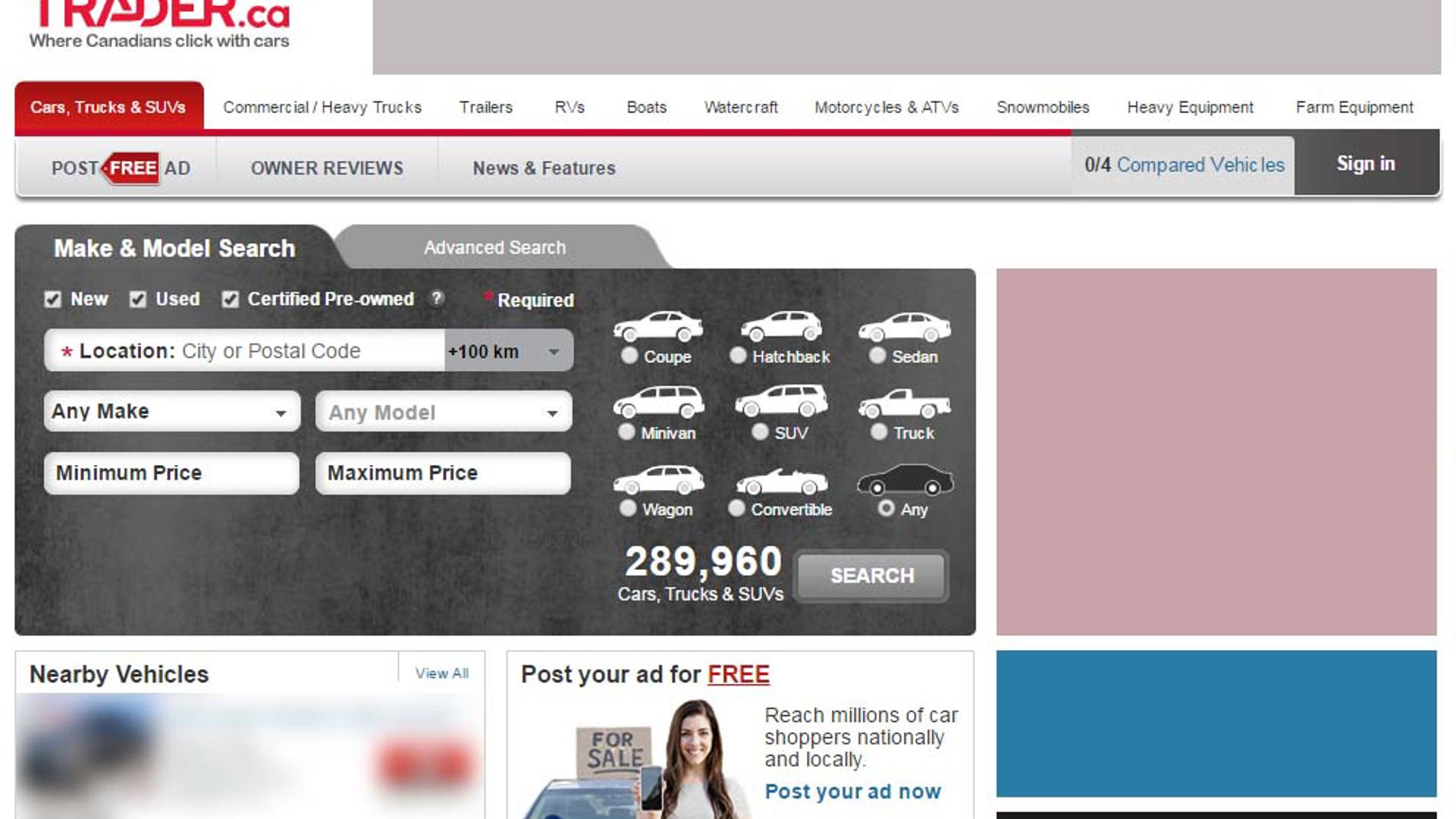Looking to trade up or get rid of an older ride? There are a couple ways to do it: trade it in or sell it yourself. If speed is a factor, by all means trade it in – just realize that a dealer needs to make a profit too and won’t give you maximum value. If you have the time, energy and motivation, selling your vehicle privately allows you to make significantly more money back on your investment.
And yes, selling it yourself is an investment. The phrase “you need to spend money to make money” definitely applies here. We’ve outlined the things you need to do (and the things you can probably skip) along with the various costs involved from cleaning, inspecting, advertising and more. Click through to see our top tips for selling your car.
Research
Before you put your pride and joy up for sale, there are a few things to educate yourself on. First, find out from your local Ministry of Transportation what kind of documentation and charges there may be to make the transaction official. For example, in Ontario, the seller is required to buy a Used Vehicle Information Kit describing the vehicle’s official condition, along with any liens or negative ‘brands’ (i.e. totaled or unfit) before anything can be processed. Other provinces simply require the seller to sign over the ownership and take payment.
The other research should be determining how much your car is worth. Sometimes this can be a big slap in the face if you’ve already been shopping used vehicles at a dealership. However, try taking your vehicle around to several and use their offers as a minimum you can negotiate to with a private buyer.
Search autoTRADER.ca for similar vehicles (year, make, model and mileage) to gauge what common asking prices are. You should also check out the Canadian Black Book for typical pricing – and be honest with yourself about its condition. There is no guarantee of what someone will pay, but they are good places to start.

Get it inspected
Unless you’re handy enough to do all the work on your car, it’s worth a hundred bucks to have an expert give it a good once-over before you put it up for sale. That way your mechanic can go over all the items that need immediate attention and which ones are fine to wait on. In some cases, a vehicle inspection is part of the sales process, and you may choose to have that done ahead of time as an incentive to potential buyers. The same goes for provinces that require an air-quality exhaust emissions test. The easier you make it for someone else to just sign some papers and be driving quicker, the more likely you are to close the deal.
Depending on what the technician finds, you may wish to have these taken care of before putting it up for sale, but don’t go overboard. An easy rule of thumb would be to fix any niggling details like burnt bulbs or missing trim pieces, leaving the big items for the next owner. If your tires are completely shot, find a set of four – matching! – used tires from a reputable source. Some tread is better than none.
A clean car is a more expensive car
Taking the time to properly wash and clean out your car will pay for itself many times over when it comes to selling. There are a few basics to remember, though.
First, make sure you either wash on a cloudy day or find a nice shady spot instead. Always use a car wash solution or concentrate designed to do just that. We all remember filling up buckets with dishwashing suds and going to town when we were kids, but modern paints and clear coats don’t react well to all those harsh chemicals.
Second, use a sponge or wash mitt and make sure to rinse it out often. If your vehicle is covered in mud or other tough grime, give it a good pre-wash with a pressure washer first. Otherwise, the tiny dirt particles can scratch the surface you’re trying to clean. Never good.

Wash from the top down, taking your time to get in all the nooks and crannies where built-up dirt can hide.
To dry it off, microfibre towels and leather chamois are great for soaking up all the excess water; synthetic ‘shammies’ are getting better all the time too, and are a less expensive solution.
Inevitably, a bird’s going to do his business all over your freshly washed ride... save your sanity and your paint by using some bird dropping cleaning wipes, also by Autoglym. From firsthand experience, these also work on tree sap, and would probably do a great job on the odd giant bug that sacrifices itself on your car’s grille.
Make it shine
Waxing is generally a much simpler process than it used to be. Hard waxes require a lot of elbow grease and are designed to protect your vehicle’s finish for months at a time, but soft or liquid waxes do a good enough job for prepping your car to sell. Again, shade is your friend. Apply the wax in small areas according to the instructions, and then let it sit and fog up a bit. After, use a terry cloth towel and soft cloth in opposite directions to make the area shine. Wax on, wax off.
However, if your car has chips and scratches that you plan to touch up beforehand, let the new paint cure for a couple days before waxing.

The vacuum is your friend
Get all the dirt, leaves and pine needles out with a good vacuum. Pet hair is especially difficult to remove, but is also one of the biggest turn-offs for potential buyers. (The other is one that smells like an ashtray.)
Use either an appropriate upholstery shampoo for the carpets, floor mats and seats and spot-treat any big stains that are really obvious. Leather seats and surfaces get specialized leather cleaner followed by a conditioner.
Small brushes, old toothbrushes and Q-tips are great tools to get gunk out of tiny crevices on the steering wheel, air vents, console and more.
Take good photos
While everyone and their dog have a smartphone with Instagram or another hipster-style photo editing app, those don’t generally provide the kind of shots that show off your vehicle in the best way possible. If you don’t have a good digital camera or one of the latest top-of-the-line smartphones, borrow one from someone who does. The size and quality of the image file will be much better and you’ll have a much better chance of having them in focus...
Find a simple place to take the photos without much to distract from your vehicle, remembering that midday is usually terrible because of the sun’s angle creating really harsh shadows. That’s even more important with black or dark-coloured rides. Cloudy days, mornings and evenings, shady spots are much better.
You’ll want all kinds of angles and options. Front, back, sides, three-quarters, plus closer photos of the wheels, open trunk or hatch, and engine bay. Moving inside, get an overall photo of the dashboard, centre console, seats, radio and then a close-up of the odometer to record the official mileage.

Advertise
Figuring out where and how you’re going to advertise your car can be challenging. How much money you should spend here depends largely on how much you want to get for your vehicle.
AutoTRADER.ca offers no-fee online listings, as do local print-based buy-and-sells. You can usually find classified sections on auto-enthusiast sites and forums. However, to make your ad stand out or to ‘bump’ the ad back up the page, there’s usually a small cost. Other good places to remember include Facebook, Twitter or any other social media site – just let your friends and contacts know and let the word spread.
Putting ads in big dailies is pretty expensive, but if you’re not getting much response from other places, it might be worth looking into.
You ideally want a balanced buffet of places for potential buyers to find your ad. Not everyone is comfortable navigating the internet and few younger buyers even pick up ‘dead-tree’ editions of anything, let alone a classified rag.
And don’t forget the most basic ad of all – a For Sale sign hanging in your ride’s window.
Be flexible on price
The magic number that you decide to put in your ad is one that comes from a combination of its potential value and what makes financial sense to you. Because everyone wants to haggle, you can pad your price by a few percent to leave room for negotiation. However, if your car is one that’s in good shape and desirable, and you can carry the added expense (insurance, parking, advertising, etc.) of a longer selling period, it can’t hurt to stand firm on your number.
If you can’t wait that long, be prepared to let your price drop until traffic picks up.
Also, if you are going to lower the price, don’t forget to change that everywhere – you don’t want an embarrassing situation where someone discovers the new number while you’re negotiating.

